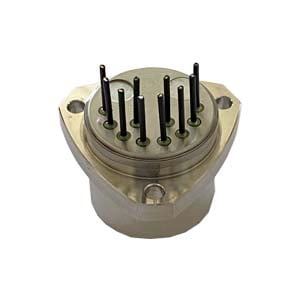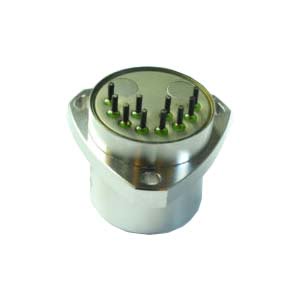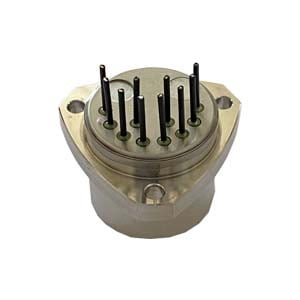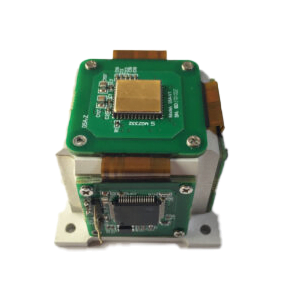A quartz accelerometer is a sensor that uses quartz crystals to measure acceleration. Its working principle is based on the piezoelectric effect of quartz crystals and the change of resonance frequency.
The structure of a quartz accelerometer consists of a mass block and a quartz crystal fixed to it. When subjected to external acceleration, the mass block will shift relative to the fixed crystal, causing the crystal to be stressed. Quartz crystals have a piezoelectric effect, that is, they produce an electric charge when subjected to pressure or deformation.
The yoke is composed of soft magnetic materials with low temperature coefficient and good magnetic permeability. The magnetic steel is processed with a grinder using permanent magnetic materials with good magnetic permeability.
The material of the flexible sheet is quartz glass with excellent temperature performance, and the shape is made by ultrasonic processing. The processing of the flexible element generally adopts the chemical etching method, or the reactive ion etching process can also be used to process the entire flexible sheet, but the cost is very high.
The amount of differential capacitance change caused by acceleration is detected by the differential capacitance detector in the servo circuit, and its output is current, which becomes the output voltage through the current integrator and then the voltage is converted into the output current by the transconductance compensation amplifier. The magnitude of this output current It is proportional to the input acceleration.
The quartz flexible acceleration sensor is a single-axis torque feedback accelerometer, which detects the acceleration signal of the outside world through the detection quality, and then is demodulated and amplified by the servo circuit, and finally the output current signal is proportional to the acceleration signal.
The performance index of the quartz flexible acceleration sensor has high measurement accuracy, good repeatability, high reliability, small size, light weight, wide voltage and low power consumption.
In summary, the principle of the quartz accelerometer is to obtain acceleration information by measuring the resonance frequency of the crystal by using the piezoelectric effect of the quartz crystal and the resonance frequency change. This makes the quartz accelerometer with high precision, good stability and reliability, and is widely used in various industrial and scientific applications.
Application field
Quartz accelerometers are widely used in many fields because of their high precision, high stability and fast response. In the space vehicle, quartz accelerometer can be used to measure the acceleration of the aircraft, so as to achieve attitude control and navigation.The ER-QA-01A is specifically designed for the field of line aviation with a zero-bias repeatability of 10μg and a Class II nonlinear repeatability of 10μg/g². Also it is suitable for inertial navigation systems, static angle measurement systems.
In the navigation system, the quartz accelerometer can be used to measure the acceleration of vehicles such as cars and aircraft, so as to achieve inertial navigation and positioning.
In earthquake monitoring, quartz accelerometers can be used to measure the acceleration of seismic waves, so as to study the occurrence mechanism of earthquakes and predict the risk of earthquakes.
If you want to get more details about accelerometer,pls visit https://www.ericcointernational.com/accelerometer/
More Technical Questions
1.What Effect Does Temperature Have on Quartz Flexible Accelerometer?
2.How do parameters affect the performance of the quartz accelerometer?
3.Choosing a Good Quartz Accelerometer is Easier to Maintain
4.Application of Quartz Accelerometer in UAV and Positioning System
5.The Role of MEMS Accelerometers in Inertial Navigation
6.Where Is The Quartz Accelerometer Used?
Products in Article







